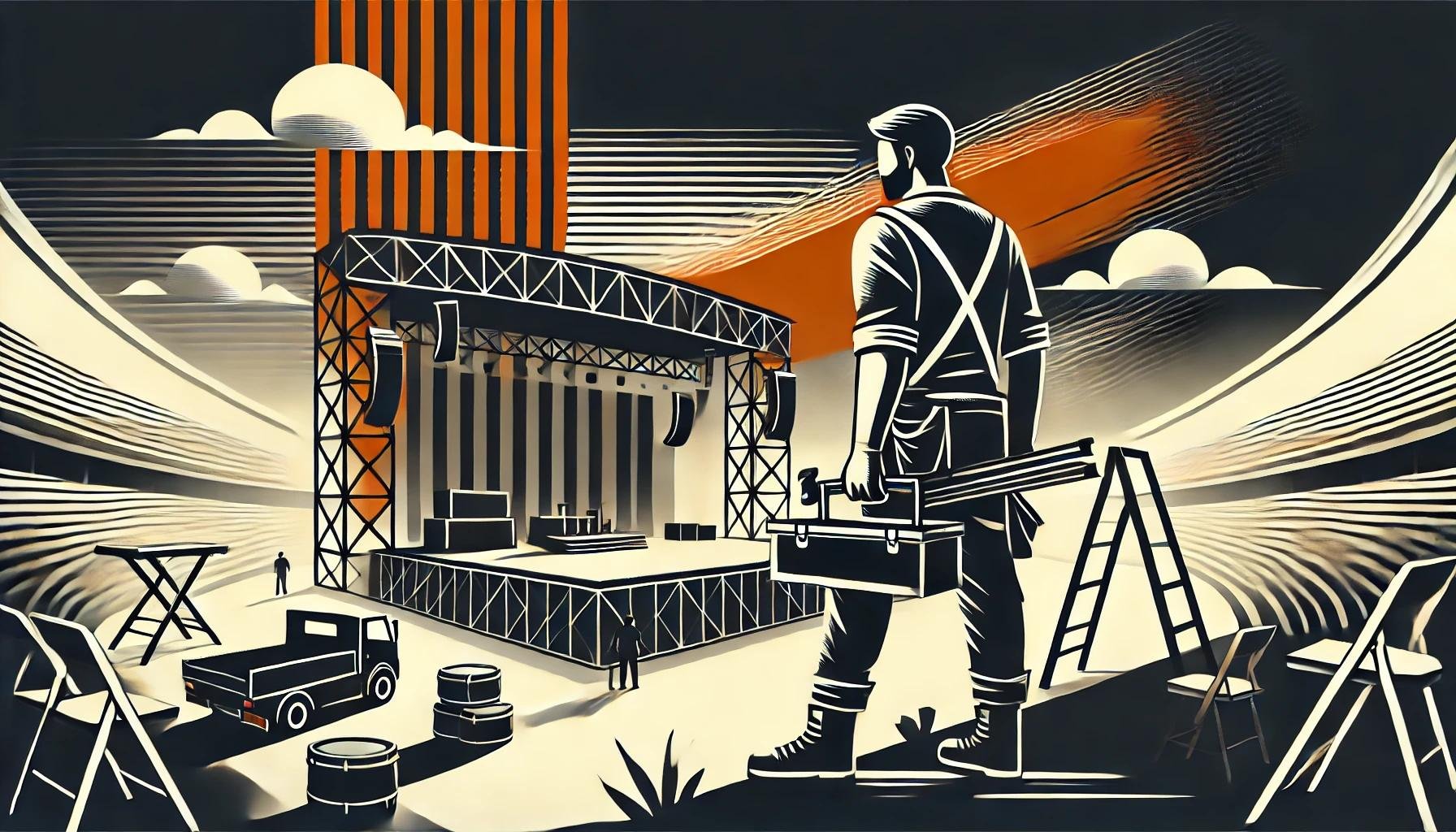From Warehouse to Stage: The Set Carpenter’s Prep Day
For a set carpenter, the prep day at the warehouse is where the tour begins. Looking over the plans and equipment that they will be working with, for the first time. This day is all about organization and problem-solving.
If you’re gearing up for a warehouse prep day, here’s some insight into the responsibilities and tasks you might face.
It's important to bare in mind that the requirements of a prep day vary, depending on whether you have rehearsals.
Inventory Check and Gear Organization:
The first order of business is taking stock of everything you’ll need for the show or tour. This means going through the stage decks, hardware, backdrops, ramps, and any custom pieces to ensure nothing is missing and everything is show ready, or on its way to being.
It’s your job to identify what needs replacing, repairing, or updating.
Label everything clearly and consider your build order when grouping items for loading and unloading—this saves a lot of time later on.
If you don't have rehearsals, an extra fine tooth comb for the tasks in this section, might be good.
Familiarizing Yourself with the Build:
The warehouse is where you’ll often see the stage for the first time in its entirety. This is your chance to get familiar with how everything fits together, especially if there are custom builds or tricky setups. Practice assembling and disassembling the components (especially custom pieces), as you’ll need to replicate this process quickly and efficiently at every venue.
Prepping Custom Pieces:
If the production includes unique or one-off stage elements, they’ll require extra attention. Custom carpentry pieces often need to be checked they're correct, as it's very easy for things to get lost in translation when placing orders.
You’ll also want to ensure pieces are compatible with the other stage elements, like trusses, rigging, and lighting mounts.
Repair and Maintenance
Prep days are a golden opportunity to repair any equipment that isn’t up to scratch. This could mean replacing worn-out bolts, sanding down splintered edges, or fixing a wobbly leg on a deck. This usually is taken care of by your supplier ahead of time. But set pieces owned by the tour, might be your responsibility.
Addressing small fixes now, can prevent big delays down the line, so don’t cut corners.
Packing and Loading Strategy:
How you pack and load the gear into the trucks can make or break your tour efficiency. As a set carpenter, you’re often responsible for ensuring the load is balanced, logical, and accessible.
You’ll want to pack the equipment in the order it’s needed at load-in and avoid overloading trucks, which can lead to delays or damaged gear.
Again, you may or may not be involved in this aspect. Your supplier might have done this all for you. Don’t like the order? you can change it at rehearsals, or when you're loading out your first show.
Testing and Mock Builds:
If there’s time, it’s smart to do a mock build of the entire stage or at least the sections you're unfamiliar with. This gives you the chance to spot any potential issues and refine the assembly process. It’s also a great opportunity to coordinate with other departments—like lighting or video—to make sure everyone’s needs are met.
Communication with the Team:
Prep days can also be a great time to start building a rapport with your team. A time to make sure everyone knows their role, understands the build process, and is on the same page about load-ins and show-day expectations.
Clear communication here saves a lot of headaches later.
Labeling and Documentation:
Make sure everything is labeled, from deck carts to the smallest flight cases. Proper documentation—like packing lists and assembly guides—ensures you can replicate the build at every venue without issues.
This step is often left for rehearsals, but can save hours of confusion on that first load in. If you have rehearsal days then intricate labeling can be left till then, but having plans printed out and ready for rehearsals at this point is a huge benefit.
Flexibility and Problem Solving:
Warehouse prep days rarely go entirely as planned. Missing parts, last-minute changes, or unclear designs are common, or should I say gurenteed. So keep communicating with production managers, creatives and suppliers to get problems solved.
Wrap-Up and Final Checks:
Before the trucks roll out, do one last walk-through of everything. Double-check that nothing’s been left behind, that all gear is properly secured, and that any necessary documentation is complete. Once you’re satisfied, you can hit the road knowing you’re set up for success.
Warehouse prep days are where the magic starts for a set carpenter. It’s about more than just loading gear—it’s about preparation, precision, and problem-solving. By staying organized, collaborating with your team, and tackling potential challenges head-on, you’ll set the stage (literally) for a smooth and successful tour.













